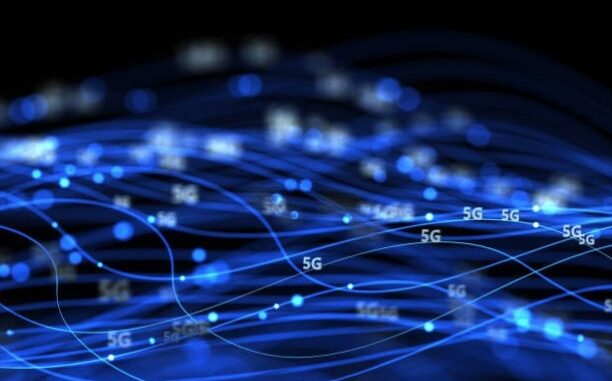
Enhanced Mobility Management in 5G is a key feature designed to ensure seamless, reliable, and efficient connectivity for users as they move across different network areas or between different types of networks.
Mobility management in 5G is significantly more advanced than in previous generations, addressing the challenges posed by higher data rates, lower latency requirements, and the need to support a vast number of connected devices.








Here’s a detailed look at the key aspects of 5G Enhanced Mobility Management:
1. Seamless Handover
Handover Types:
Intra-Frequency Handover: Transitioning between cells within the same frequency band, typically seamless and fast due to the similarity in radio conditions.
Inter-Frequency Handover: Transitioning between cells operating on different frequency bands, such as from a sub-6 GHz cell to a mmWave cell. This requires more complex management due to different radio characteristics.
Inter-RAT (Radio Access Technology) Handover: Transitioning between different types of networks, such as between 4G LTE and 5G NR (New Radio). 5G supports smoother transitions between these technologies, minimizing interruptions.
Make-before-Break Mechanism:
In 5G, the network often sets up the new connection (in the target cell) before the old one is terminated (in the source cell). This “make-before-break” mechanism helps in reducing the likelihood of dropped connections during handovers.
Seamless User Experience:
The goal is to maintain consistent user experience during mobility, ensuring that high data rate applications, such as video streaming or online gaming, continue uninterrupted.
2. Multi-Connectivity
Dual Connectivity (DC):
5G supports Dual Connectivity, allowing a device to maintain simultaneous connections to both a 4G LTE and a 5G NR cell (e.g., EN-DC: Evolved Universal Terrestrial Radio Access New Radio Dual Connectivity). This ensures that if one connection is lost or degraded, the other can take over, providing a seamless experience.
Carrier Aggregation:
Devices can aggregate multiple carriers across different frequency bands, enhancing data rates and reliability. This is especially useful in scenarios where a combination of sub-6 GHz (for coverage) and mmWave (for high-speed data) is used.
Multi-RAT Connectivity:
5G devices can connect to multiple Radio Access Technologies simultaneously, such as 4G, Wi-Fi, and 5G, optimizing data throughput and ensuring continuous service.
3. Enhanced Handover Techniques
Conditional Handover (CHO):
CHO allows the network to prepare multiple target cells for a handover in advance, based on predicted user movement or quality of service. The final decision to switch is made when the signal quality meets the pre-configured criteria.
Inter-Cell RACH Optimization:
The Random Access Channel (RACH) process is optimized in 5G to reduce the latency and increase the reliability of handovers, particularly in high-mobility scenarios like fast-moving vehicles.
Beam Switching in mmWave:
In mmWave bands, where narrow beams are used, beam switching is critical for maintaining connectivity as a user moves. The network can dynamically switch between different beams to maintain the best possible signal.
4. Context-Aware Mobility
User Context Awareness:
5G networks can track and use contextual information about the user, such as location, speed, and historical data, to make intelligent decisions about when and how to initiate handovers.
Network Slicing Awareness:
Mobility management is integrated with network slicing, ensuring that different slices (e.g., for eMBB, URLLC) maintain their specific performance requirements even as users move across cells or network segments.
Quality of Experience (QoE) Management:
The network actively monitors and manages the user’s quality of experience, dynamically adjusting network parameters to ensure that applications requiring low latency or high throughput continue to perform optimally during mobility.
5. Edge Computing and Mobility
Edge Anchoring:
Edge computing resources can be re-anchored to follow the user as they move, ensuring that latency remains low and data processing remains local. This is particularly important for applications like autonomous driving and augmented reality.
Proximity Services:
5G supports proximity-based services where edge servers near the user are dynamically selected based on the user’s location, minimizing latency and improving service continuity.
6. Mobility Robustness Optimization
Failure Recovery:
The 5G network is equipped with mechanisms to quickly recover from handover failures, ensuring that the user is promptly reconnected, and service disruption is minimized.
Connection Re-establishment:
If a handover fails or the connection is lost, the network can quickly re-establish the connection with minimal impact on the user experience.
7. Energy Efficiency in Mobility
Idle Mode Mobility:
5G introduces enhanced mechanisms for managing idle mode mobility, reducing the energy consumption of user devices when they are not actively transmitting or receiving data.
Connected Mode DRX (Discontinuous Reception):
In connected mode, devices can enter DRX mode, where they periodically wake up to check for data, reducing energy consumption while maintaining readiness for mobility events.
8. Mobility in High-Density Environments
Small Cell and mmWave Mobility:
In urban environments with dense small cell deployments, 5G ensures smooth handovers between these cells, which may operate on different frequencies, including mmWave. This is critical for maintaining high throughput and low latency.
Crowdsourced Mobility Data:
The network can utilize crowdsourced data from devices to optimize mobility management, learning from real-world user movements to improve handover decisions.
9. AI and Machine Learning in Mobility Management
Predictive Analytics:
AI and machine learning algorithms can predict user movement patterns and preemptively optimize network resources for handover, reducing latency and improving reliability.
Dynamic Network Optimization:
AI-driven algorithms continuously monitor network performance and user mobility, dynamically adjusting parameters like handover thresholds, beam angles, and power levels to optimize user experience.
10. Mobility Support for IoT Devices
Massive IoT Mobility:
5G is designed to handle the mobility of massive numbers of IoT devices, ensuring reliable connectivity even in environments with a high density of connected devices.
Low-Power Wide-Area (LPWA) Support:
For IoT devices with low data rate requirements but high mobility, 5G supports LPWA technologies like NB-IoT (Narrowband IoT) and LTE-M, which are optimized for low power consumption and extended coverage.
5G’s Enhanced Mobility Management is crucial for delivering the high performance and reliability expected of the next generation of mobile networks. By incorporating advanced handover techniques, multi-connectivity, context-aware decisions, and integration with edge computing, 5G ensures that users and devices maintain seamless connectivity and optimal performance, even in challenging environments.

Leave a Reply